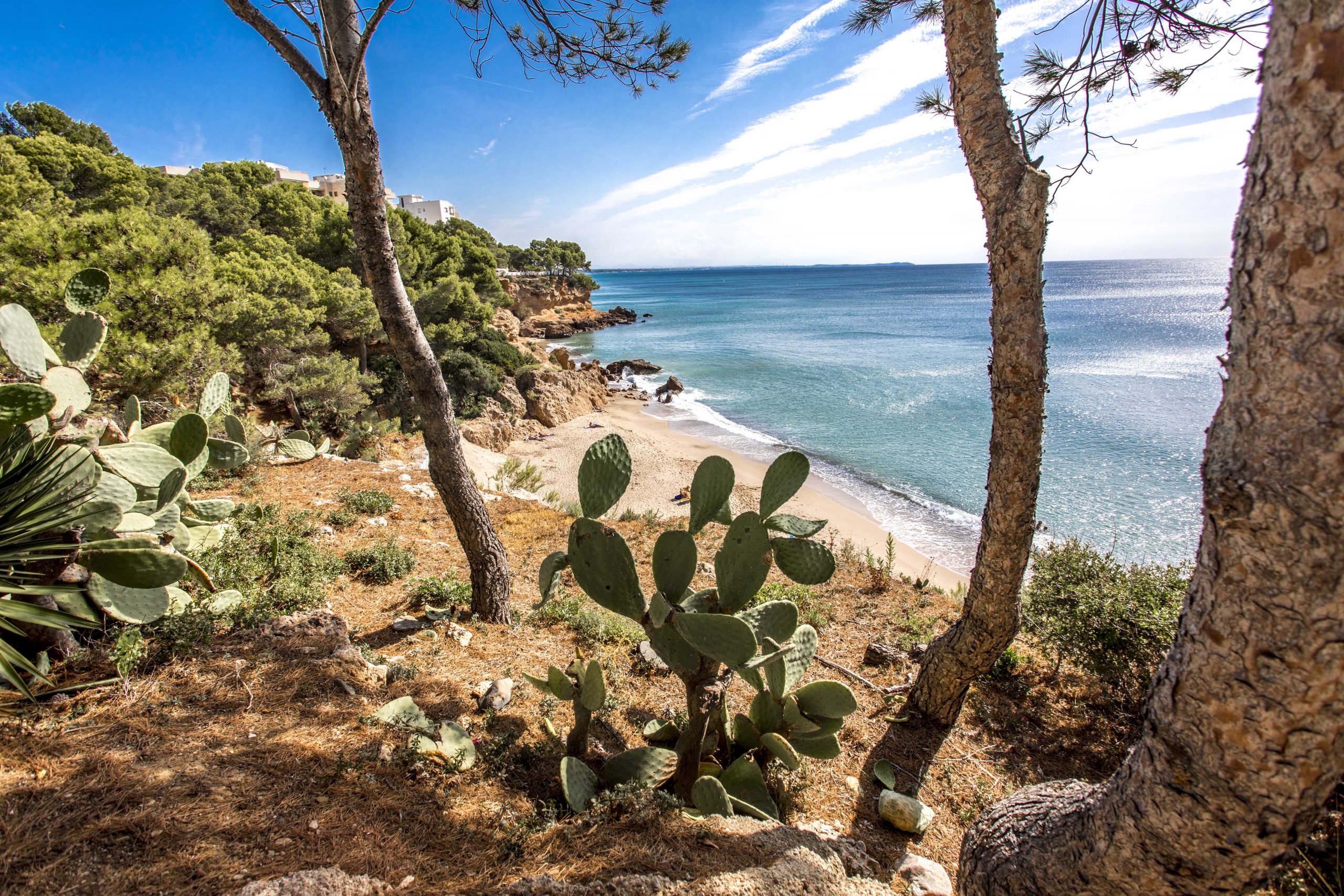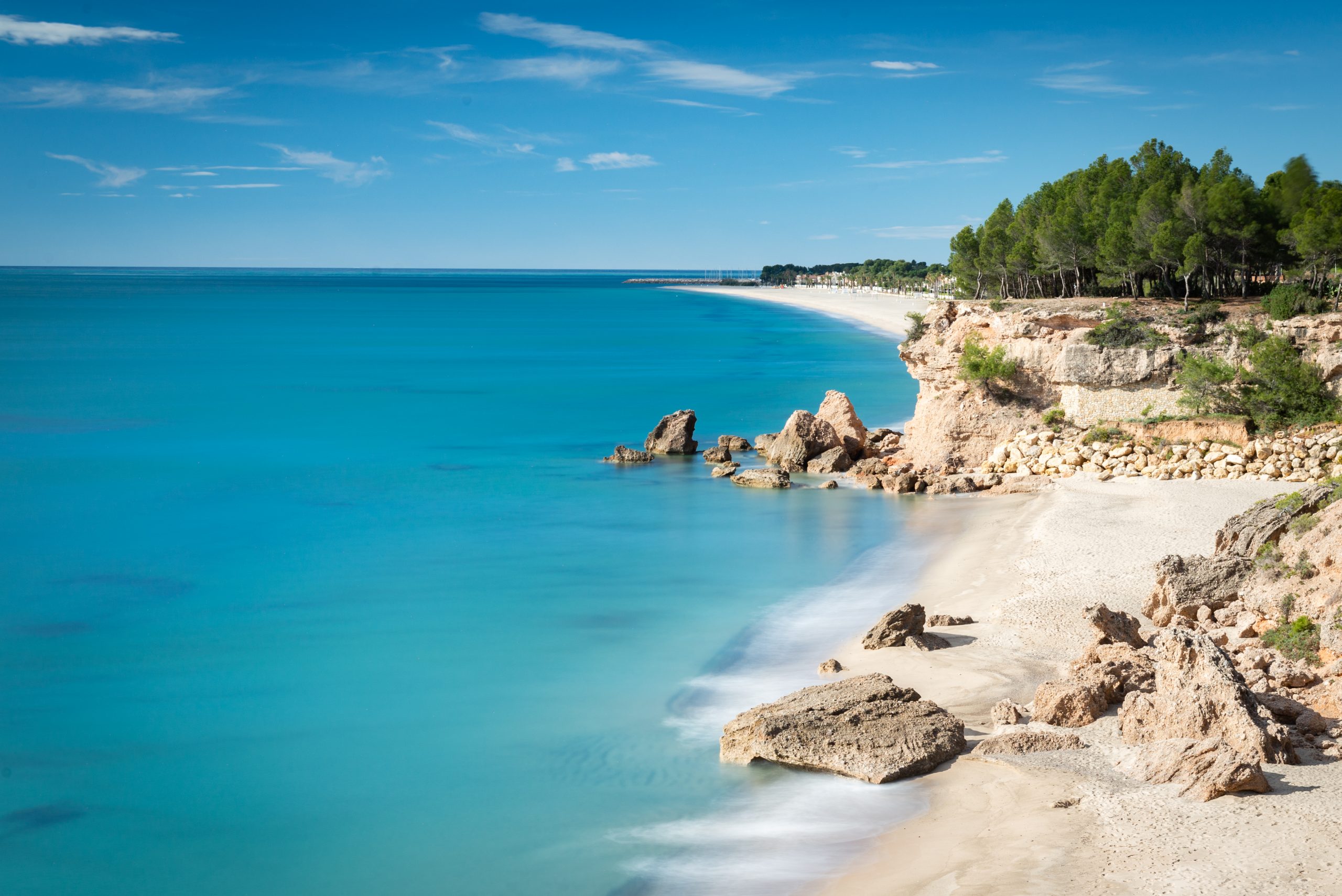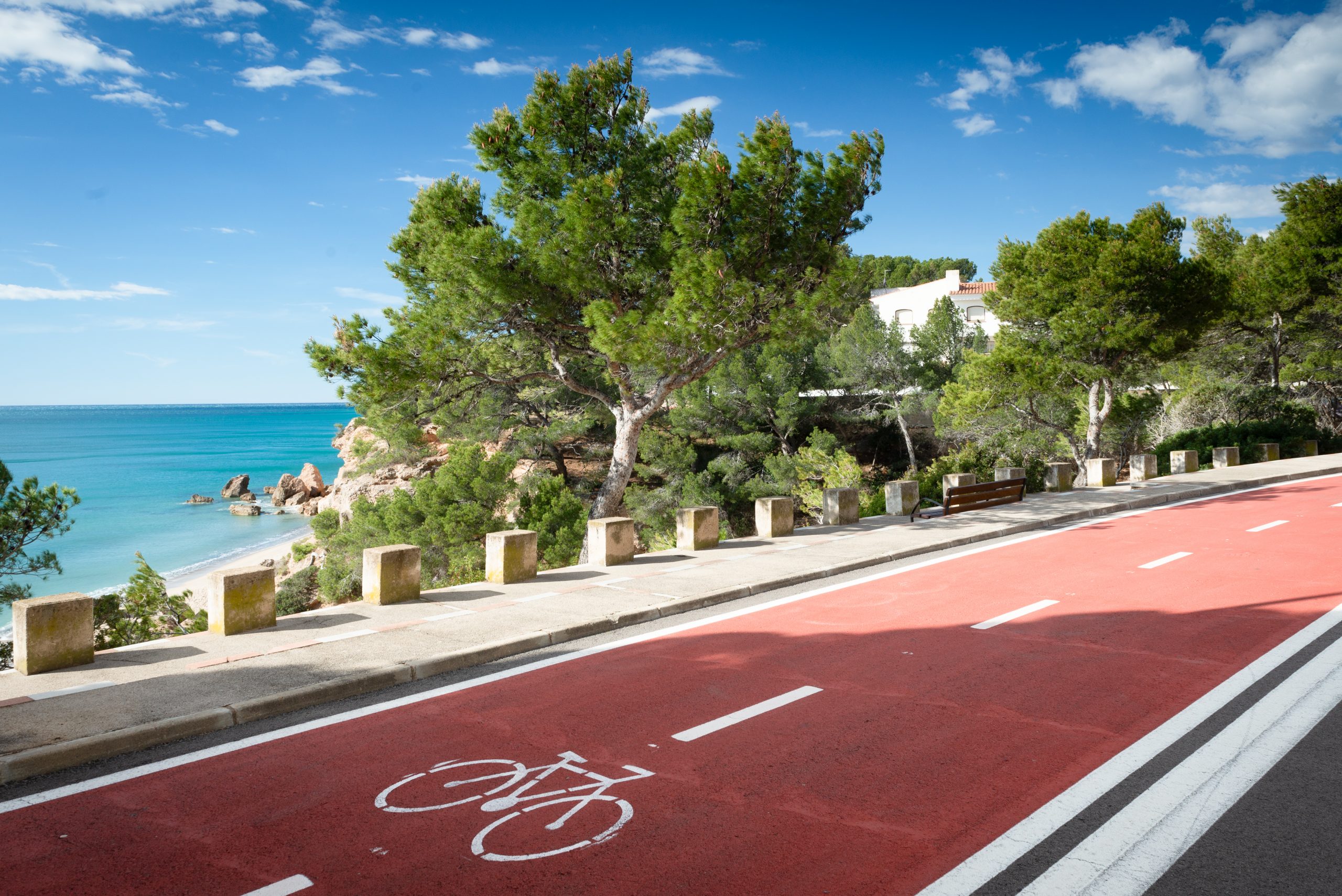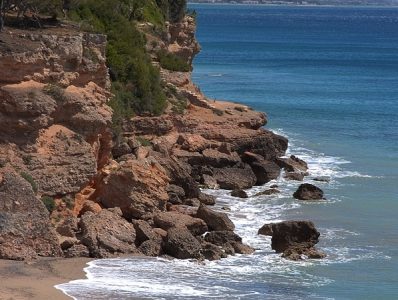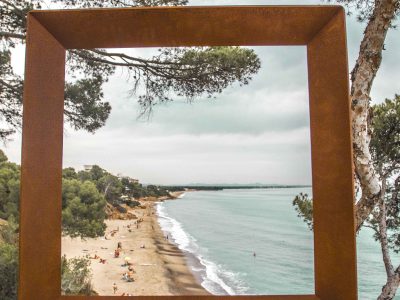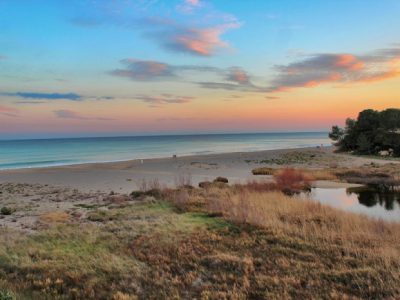Description
Miami Platja is situated between Miramar and the river Llastres, at the main seafront of this borough. From the coast we have an excellent view of the gulf Sant Jordi, but standing on the top of the cliffs, this sight is unbeatable. With nine winding creeks and vast, not overcrowded beaches, Miami Platja is, definitely, one of the most beautiful, singular and unknown places at the the Costa Dorada. Nowadays, at the whole township, it is the centre where we can find the hugest gastronomic, hotel and services offer.
In the last century Miami Platja experienced a strong development, in connection with the economic growth, as a result of the “developmentalism” and the boost of mass tourism by the end of the 50s and during the 60s. In this economic context, within the framework of future and economic opportunity generated by “sun and beach” tourism, lots of private initiatives were taken to develop and urbanize still unspoiled coastal areas. Marcel·lí Esquius i Garcia (1896-1969), who was Miami Platja’s initiator and founder in 1952 is an evident example. Esquius found at Mont-roig del Camp’s coast the ideal place to promote a new urbanisation in a setting that reminded him of the Costa Brava. His determination made his dream come true: to convert the former hunting ground of the Marquis of Marianao into an unique coastal spot, that today makes up the main part of the whole township’s population and, that accommodates between 80,000 and 90,000 visitors in the summer season.
Today’s population is composed by a rich and varied demographic ensemble. In those first years of urban development, people from different places of the country settled down here, looking for new job opportunities, especially in the tourism and construction sector. Nowadays, those first families have put down roots in the place, which they already consider their town and some of them have already arrived to the third generation. Over the last few decades, people that have come from all over Europe and other non-EU countries, have consolidated and made grow Miami Platja.
In terms of architecture, we have to underline the church Santa Maria Magdalena built in 1964, which is a beautiful example of contemporary religious art, influenced by the ideas that inspired the Second Vatican Council. The church – that cost three million pesetas, today’s 18,000 € – was donated by Marcel·lí Esquius to the Archbishopric of Tarragona. Cardinal Benjamín de Arriba y Castro placed the first stone in 1961.
A curious fact is that on 24 July 1960 Amalia Fleming, the widow of the discoverer of penicillin, Alexander Fleming, inaugurated in Miami Platja a square and a bust in honour of the Scottish Nobel laureate.
